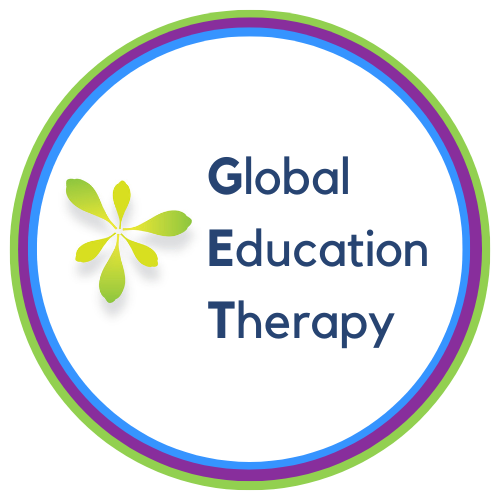Understanding Echolalia and Its Impact on Language Development | Gestalt Language Processors
Echolalia is a language pattern commonly observed in individuals with Autism Spectrum Disorder (ASD). It involves the repetition of whole sentences or phrases, often taken directly from movies or other sources. This behavior, known as "delayed echolalia" or "video talk," can leave us wondering about its purpose and significance. Delayed echolalia is not meaningless repetition but rather a valuable tool for communication and self-expression. Children with ASD may use echolalia to convey their thoughts, emotions, or desires in a way that feels comfortable and familiar to them. (1)
Children who use echolalia typically fall into the category of Gestalt Language Processors (GLPs). We are used to analytic language processors, who develop from single words to sentences. With GLPs, Language then develops from small chunks to single words and two-word combinations. Language naturally develops into phrases and sentences. Sentences include more complex grammar. (1)
Gestalt Language Processing 3 Key Takeaways (2):
Echolalic language provides kids with ASD meaningful language contexts: Children learn language by extracting useful phrases from the language they hear in their environment. They break down larger chunks of language into smaller, meaningful phrases through exposure to similar utterances. We can help facilitate this by providing various language contexts such as movies, books, & everyday conversations at home that the child can use effectively.
When the child’s expressive language includes a small collection of phrases, they can mix them up: This allows the child to create semioriginal sentences. For instance, “Come on, guys—let’s get out of here!” and “Coming soon—to a theater near you!” becomes “Come on, guys—to a theater near you!” This is how mix and match works in real life!
Echolalia signals a delay, not a disorder: Echolalia seems like a symptom of a language disorder because mitigation is delayed. For young NT kids, long gestalts sound like an unintelligible blur of melody. However, echolalic kids with ASD are older & since their speech is better, we recognize the words as quotes such as movie lines.
6 Stages of Gestalt Language Processing (1)
Self-generated phrases & simple sentences: The child is experimenting with meaningful word combinations and emerging grammar. (1)
Mitigated Gestalts: Scripts are broken down into smaller parts and combined in new ways. (1)
Isolation & Combination of Single words: Mitigations are further broken down into single words that are combined without grammar. (1)
Self-generated phrases & simple sentences: The child is experimenting with meaningful word combinations and emerging grammar. (1)
Self-generated sentences used in everyday situations: The child is adding more advanced grammar to their basic sentences. (1)
Self-generated sentences used in more complex situations: The older child is using sophisticated grammar correctly. (1)
How can I support a Gestalt Language Processor? (1)
Acknowledge Communiqués:
Acknowledge all attempts at communication, including unintelligible speech.
Personalize acknowledgment to keep the convo going (e.g., repeat the intonational pattern/melody, word/sound
Reply in a way that honors the individual (e.g., smile, nod, match pitch, take a turn, provide next line).
Look for meaning:
Pay attention to the language that the child is already using.
Learn favorite shows, movie clips, songs, and phrases used most often throughout the individual’s day.
Pay attention to what context the child is using specific gestalts.
Make connections:
Create connections between verbalizations and vocalizations and related experiences so you learn the functions of the communication.
This helps support intentional communication. The child’s language may not always be literal, so pick up your magnifying glass because detective work can be an ongoing process!
Enhance the experience:
Consider incorporating sensorimotor activities to support regulation.
Set up the child’s AAC device to support their language/communication.
Create a natural environment incorporating the child’s interests.
If in a school setting, include regulation and NLA principles within the IEP accommodations. Inform teachers and other team members to ensure collaboration
Offer new language:
Talk naturally, and model new language within experiences that matter to the individual
New language should be individualized for the GLP, and modeled with rich intonation. If the child has language for a specific experience, use their language in novel, but similar situations. Offer easily mitigable, natural phrases (e.g. begin with “Let’s”, “That’s”, “It’s”, “I’m”, “Where ’s”)
Consult:
Contact others on the individual’s team to confer about the Stage the individual is mainly operating in and what to look for next.
Create an ongoing, accessible list of languages the individual uses. Provide examples of language models and strategies so everyone is on the same page about GLP and NLA
Global Education Therapy prides itself on its multidisciplinary teamwork. If you’re looking for additional support from professional therapists and educators, reach out to us for a free 20-minute consultation so we can help you establish a team for your child or student.
References:
Blanc, M. (2013). Echolalia on the spectrum: The natural path to self-generated language. Communication Development Center. https://communicationdevelopmentcenter.com/wp-content/uploads/2022/08/echolaliaonthespectrum.pdf
Blanc, M. (2005). Finding the Words... To Tell the “Whole” Story Natural Language Acquisition on the Autism Spectrum. Communication Development Center. https://communicationdevelopmentcenter.com/wp-content/uploads/2022/08/Finding-the-Words-to-Self-Regulate-pdf.pdf


